It all began in the mid-1970’s when the Cactus Radio Club in California came across a large quantity of surplus 2GHz ITT microwave equipment. We had already been experiencing frequency congestion on the UHF band in the heavily populated southern California corridor and we were looking for a way to accomplish two things: a reduction of squelch noises and intermod on the radio links between sites and a way to increase capacity for more users as the system rapidly grew. The solution was to use the microwave equipment to supply some of these needs. Unfortunately, it wasn’t to happen in the ’70’s. The old varactor diode technology of the radios just proved too unstable to tune to the higher frequency needed by our amateur 2 GHz frequency allocations.
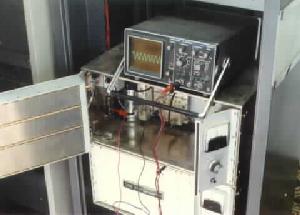
Meanwhile, there were other projects quietly happening: Troy, WA7ELN, was slowly collecting test equipment and also acquired a few Farinon SS-2000 microwave shelves. These proved themselves tunable into the ham bands with some difficulty, but it was possible. Troy managed to get a 1 way link running across the town of Oracle, AZ by the mid-80’s. N7CK, meanwhile moved in to the adjacent town of San Manuel. WA7ELN and N7CK got together and decided to build a link for the newly rebuilt Oracle remote in order to tie it into the intertie at Mt. Lemmon. This involved tuning up another set of SS-2000’s, re-tuning and building simple antennas and trying to get some sort of MUX and signaling working.
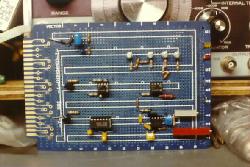
Our first attempt at MUX was built using a scheme similar to FM broadcast subcarriers. We signaled by putting a high frequency tone on the signal when we wanted the squelch to close.
This would fool the squelch chip in the controller into thinking there was noise and it would shut off.
The system was installed by 1990 and it worked well for our single channel link. The problem was that we wanted multiple links and the other advantages that come with a microwave system. We got lucky and found a source of telco surplus Granger DTL-7300 mux cards around 1992. It was also helpful that most of the cards had E & M signaling tones built in. Our task was both simplified and complicated. We had the cards, but we had to build interfaces to the -24 v signaling levels.
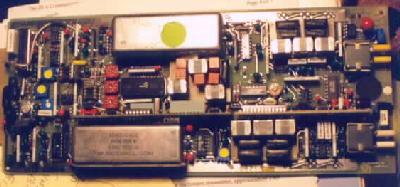
We built the next link to Pinal Peak, again using another pair of SS-2000’s. This time we interfaced the Granger MUX. We learned a lot about level setting and interfacing while building prototype interfaces on the back of the mux card cages.
This link was installed with two channels: one that carried the Mt. Lemmon – Pinal link, passing through Oracle and the other link which terminated at the Oracle controller. This in effect gave us two paths from Pinal to Mt. Lemmon. The system worked for a few years with minor interruptions mostly due to the ‘temporary’ antennas we used at the Oracle site.
From this point on, we had the basics down and began a search for more modern radio equipment in a quantity sufficient to be able to replace many of our existing 420 links.
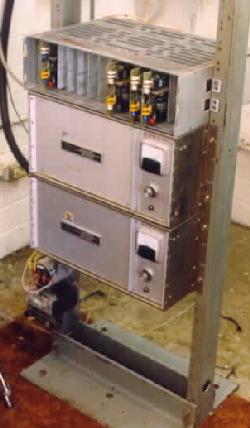
The next big breakthrough occurred in 1996 when K7PRS came across a pair of Granger-Telettra HR-2 transceivers. These were much more modern synthesized 2GHz transceivers. We were able to obtain a service manual and set out learning about the radios. It seems that they were designed to work in frequency bands located either above or below the amateur 2GHz allocation. Upon further examination we found that the micro-stripline circuit boards were identical for either tuning range. The manufacturer simply tuned the striplines with some silver paint. Now all we had to do was learn to tune micro-striplines!
We were in luck, however, because our group has expertise in the form of Jim, WA7CJO, a microwave moonbounce expert. We took the problem to him and after tuning a number of the radios he taught us the procedure to get them moved to the right frequency range. We also learned a lot about MEK and silver pen solvents.
All we needed now were more radios. It was time to make a trip to the Dayton Hamvention.
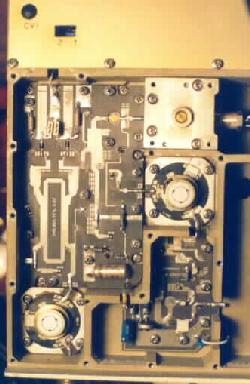
In 1997 a large contingent of CARBA and SARBA members made the trip to Ohio to find more radio equipment. We searched the flea market with great diligence until on the last day Chris, N7TWW, made the find of the weekend. There were about 25 of the Telettra radios sitting on the bottom shelves of a surplus dealer’s display. Negotiations were made, money was pooled together, and the radios were loaded into John, KC7IM’s motor home for the trip to Arizona.
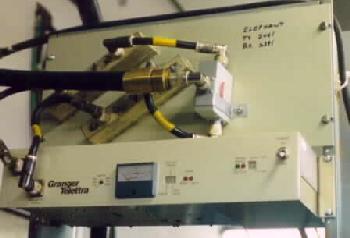
Once we recovered from the trip, it was time to begin making things work. First we tuned up 5 pairs of radios, but we couldn’t use them without filters and duplexers. The filters were a big problem. We needed filters and circulators to make the radios full duplex into one antenna. We had to start disassembling the older SS-2000 radios we had. We found there were two types of filters and the ones that were most plentiful required machining to make them tune in the ham band. KB7RFI came to the rescue and prepared all the filters we would need for our original project. This involved shortening the tuning elements, mounting them on rack panels with the circulators and cabling up the panels to make duplexers.
Meanwhile, N7CK and WA7ELN tuned the filters and antenna feeds. We also had a MUX party where we checked out, repaired and aligned about 40 of our mux cards.
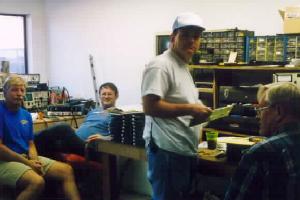
Now was the time to begin building our new microwave hub on Mt. Bigelow. We planned to have at least five links tie together at the site. We began by building the links to Pinal Peak and Elephant Head. We did these two first so that we could make a kind of ‘bypass’ around the existing links, enabling us to disconnect the Oracle links once the Pinal/Elephant Head link was working. We installed the first two dishes on Mt. Bigelow and a second dish on Pinal Peak.
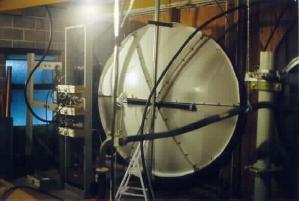
The construction on Mt. Bigelow proved a real challenge as we had to haul everything we needed up a 12 foot ladder to a third story attic of the transmitter building. The ladder poked through a three foot square opening in the floor of the attic. Our biggest challenge was to get a six foot dish antenna through this hole. Luckily we found a surplus home satellite dish that came apart in sections, so we were able to disassemble and reassemble the dish in its new home. We also mounted an eight foot grid dish on the exterior of the building to point toward Pinal Peak. Getting the RF to work was fairly straightforward. It was a matter of running heliax to the dishes and hooking them up to the filters. The hard part was getting the Granger mux to work. The radios we had were part of a whole shelf and we were missing many of the baseband components.
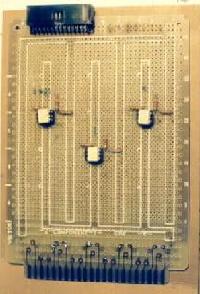
We found we had to homebrew some audio pads and high pass filters to make the mux work with the radios. We learned a lot about terminations, measurements, Bessel functions and the need to get test equipment calibrated. All in all, we found out that getting mux to work was a matter of getting the levels set very accurately. There is not much room for error. In the end, we had the bypass running by the time CARBA hosted the Cactus meeting in February of 1999.
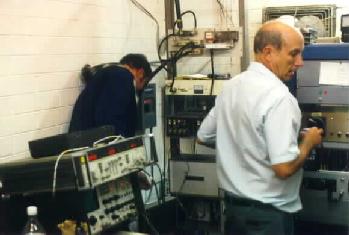
Once the meeting was over and we were able to take a breather, we began again by taking a close look at our test equipment. We re-calibrated the frequency selective voltmeters (that we use to measure baseband tone levels) so that they would agree with one another and then made trips to each site to re-set transmitter and receiver baseband audio levels. With the Telettras this involved injecting an audio tone of a known frequency and level and setting the deviation control to null out the first bessel function as viewed on a spectrum analyzer. The level setting became a real learning experience. Once the radio levels were set, we again went to Pinal, Bigelow and Elephant Head and set up the mux cards. We had made homebrew pads and filters to go between the radios and the mux shelves, and we ended up redesigning them 3 times until we had the levels correct.
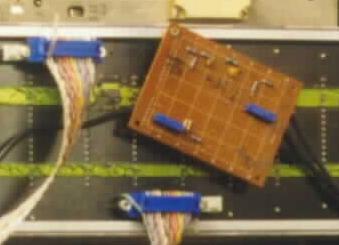
At this point, it seemed that we had made no progress, except that we had cut over to our permanent interface equipment. The links were still running from Pinal Peak via Mt. Bigelow to Elephant Head to Downtown and back to Mt. Lemmon. It was now getting time to make some permanent changes. Our next move was a big one. We planned to move the main Palomar controller and the 420 link to Jack’s Peak from Mt. Lemmon to Mt. Bigelow. All that would be left on Mt. Lemmon would be the microwave radio, some interface cards, mux and the 440 radio.
Step one of the big move was to turn the Mt. Lemmon dish from Oracle to Mt. Bigelow. (Oracle would have its link still to Pinal Peak) We moved the origninal SS-2000 from Oracle to Mt. Bigelow and hooked them to the interface.
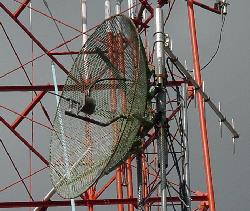
Step two was really the big moving day. We removed the link from Mt. Lemmon to Downtown Tucson, trading it to the Pinal group for another set of Telettras. Then we took the Jacks Peak 420 link and the Palomar controller and moved them to Mt. Bigelow, hooking up the remaining 440 radio on Mt. Lemmon to some new homebrew interface cards. After lunch at the Iron Door restaurant (it’s great to have a restaurant on your mountaintop) we went to Mt. Bigelow and hooked up the controller and the 420 radio to the mux cards. The only real difficulties we had were in getting the 420 link to work reliably after the move.
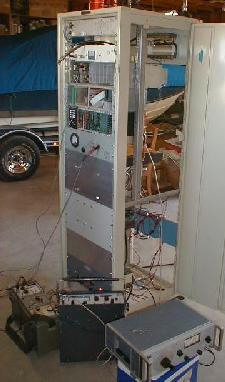
Now we were linked to Elephant Head, Pinal and Mt. Lemmon. Downtown Tucson was still running on the link to Elephant Head. Our solution was to build a whole new Downtown Tucson radio with only a microwave link. We started from scratch building the radio around the microwave link rather than the other way around. It took some time to decide on the controller interface, but other than that things went smoothly thanks to the learning experiences we had on the other sites. Over a period of weeks we built up the rack in KB7RFI’s garage and set the levels. The big day finally came and we hauled our precious rack of equipment up the hill. You can see that story in more detail on the Downtown page.]
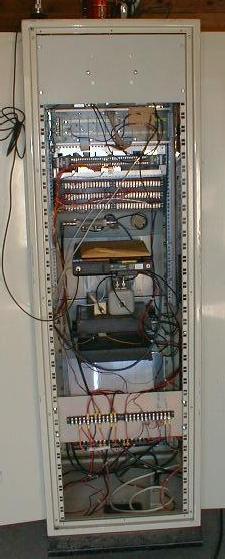
All this completed the system for the millennium. The next project will be a microwave link to Heliograph Peak and from there to Jacks Peak. The radios tuned up and are working on the antennas and hope to do the RF installation sometime in the summer of 2000. We completed links from Pinal to Jacks Peak by the February 2001 Cactus meeting.
Now that we have reached the millennium, our next adventure is a moving one. As television stations have been required to install digital transmitters, there is construction work on every mountaintop which has television transmitters. Mt. Bigelow is no exception. We found out in the fall of 2001 that the attic in which we have our dishes and racks is going to become a full fledged third story. This will cause us to have to do some major reconstruction since all the antennas will have to be relocated.
The construction of the third story involved removal of the roof structure of the building, extension of the walls and a new roof. New power wiring was put in place and CH-11 and 18 TV transmitters were located in the new room. With much help from SARA (Search and Rescue) we were able to move all our antennas on to an new ice bridge/catwalk structure which surrounded the building. We remounted our radios in a new pair of racks, and eventually replaced the controller with a SRS unit.
The time is now November 2004. Much has happened. There was a major fire on Mt. Lemmon which totally destroyed the Lemmon site. As a result of these events, the expansion of the microwave system came to a virtual standstill, although there was much updating and rebuilding of existing systems.
Since the fire, the Mt. Lemmon building has been rebuilt and the antennas replaced. One of the few things that survived was our dish antenna although the radome was melted. We were able to replace the radome and reinstall the antenna on the tower. The whole radio on the Mt. Lemmon site was rebuilt from scratch. The tragedy of the fire turned into an opportunity to create a model of our microwave sites of the future.
The new Mt. Lemmon rack has an MSF-5000 radio for the 440, and we replaced the aging SS-2000 microwave radios with a new Telettra radio, we used our usual filter arrangement. What is new is that we designed new pads to interface the radio to the mux cards and also made a baseband CW ID’er to interface into the pad cards. This enables us to have the links identified but not to have to hear the ID’s ourselves. We also ran the I/O of the mux cards to punch down blocks for easy interconnect to other radios.
The replacement of the SS-2000 radios on Mt. Lemmon caused a ripple effect that went to the other end of the link on Mt. Bigelow.
Over the next couple of years we finished up work on the Heliograph link and extended the system by adding a link from Heliograph to Jacks Peak. This completed the analog system of microwave links.
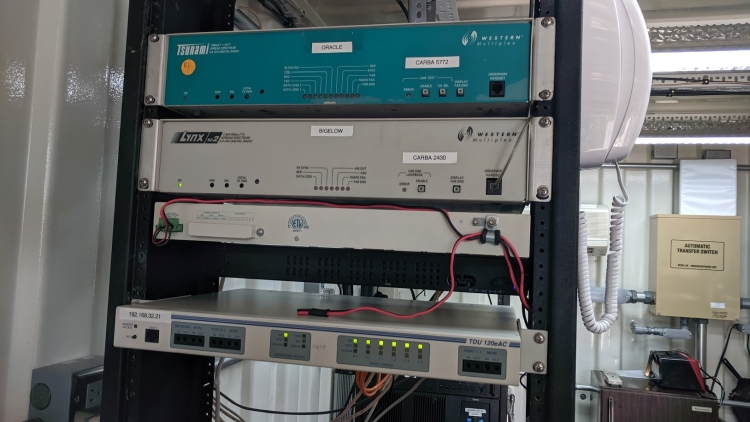
The year 2006 was our first move into digital microwave. As commercial providers moved to high speed licensed links, inexpensive surplus T1 link radios became available for reasonable cost. Along with the Jacks Peak group, we were able to acquire a number of 2 GHz digital T1 radios. Although they are a compromise for internet providers, they are just right for our need for a very low latency voice link. We were also able to obtain digital mux for a low cost as well, so from 2006-2018 we replaced all of our analog links with digital ones. Doing this helped us with audio quality and level stability, gave us 24 channels per link and greatly simplified cabling the racks. Boards were produced so that we could plug the mux directly into our controllers using standard ethernet cables. Our two main challenges with the digital mux were the need for accurate timing for the synchronous T1 standards, solved by a GPS disciplined clock on Pinal Peak, and the susceptibility of interference from wi-fi by our wideband signals, solved by coordinating frequencies with other site users and carefully selecting radio bandwidth. Luckily we did not have to change antennas on our existing 2 GHz paths, but in New Mexico, 5 GHz radios and antennas were able to be put to good use.